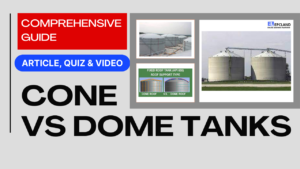Introduction
In the realm of metallurgy, ASTM A316 Stainless Steel stands out as a versatile and robust material known for its exceptional properties and wide-ranging applications. This alloy offers a remarkable blend of corrosion resistance, strength, and durability, making it a prime choice across numerous industries. Let’s delve into the depths of ASTM A316 Stainless Steel, exploring its attributes, applications, and the value it brings to modern engineering.
Table of Contents
Check out the Similar Articles on ASTM Standards
1. Introduction
Stainless steel is a remarkable material that has become a cornerstone of modern industry due to its exceptional properties. Among the many grades of stainless steel, ASTM A316 stands out for its unique characteristics and applications. This comprehensive guide aims to delve into the intricacies of ASTM A316 stainless steel, providing insights into its grades, chemical composition, mechanical properties, manufacturing processes, pros and cons, applications, standards, quality control, and much more.
Importance of Stainless Steel in Industrial Applications
Stainless steel is celebrated for its corrosion resistance, durability, and aesthetic appeal, making it indispensable in various sectors such as construction, manufacturing, energy, transportation, and healthcare. Its ability to withstand harsh environments, temperature fluctuations, and chemical exposure has earned it a central role in engineering and design.
Role of ASTM Standards
The American Society for Testing and Materials (ASTM) sets standards that ensure the quality, consistency, and safety of materials used in diverse industries. These standards, developed through rigorous research and testing, aid manufacturers, engineers, and consumers in making informed decisions about material selection, design, and application.
2. Various Grades of ASTM A316
ASTM A316 encompasses a range of grades, each tailored to specific applications. Notable variations include A316L and A316H, which exhibit distinctive properties suited for particular environments.
Differentiation based on Composition and Intended Use
Grades within ASTM A316 differ primarily in their carbon content, leading to variations in corrosion resistance, mechanical strength, and weldability. A316L, with its reduced carbon content, offers superior corrosion resistance in challenging environments, while A316H boasts heightened high-temperature strength.
Comparison of Key Properties
| Grade | Carbon Content (%) | Tensile Strength (MPa) | Corrosion Resistance |
|---|---|---|---|
| A316 | 0.08 max | 515 min | Excellent |
| A316L | 0.03 max | 485 min | Excellent |
| A316H | 0.10-0.16 | 585 min | Excellent |
3. Chemical Composition
The chemical composition of ASTM A316 stainless steel heavily influences its mechanical and chemical properties. Each element plays a crucial role in determining the material’s behavior.
Elemental Influence on Material Properties
- Chromium (Cr): Enhances corrosion resistance.
- Nickel (Ni): Improves ductility and toughness.
- Molybdenum (Mo): Increases resistance to pitting and crevice corrosion.
- Carbon (C): Affects hardness and weldability.
Chemical Composition for Different Grades (in %)
| Element | A316 | A316L | A316H |
|---|---|---|---|
| Chromium | 16-18 | 16-18 | 16-18 |
| Nickel | 10-14 | 10-14 | 10-14 |
| Molybdenum | 2-3 | 2-3 | 2-3 |
| Carbon | 0.08 | 0.03 | 0.10-0.16 |
4. Mechanical & Chemical Properties
The mechanical and chemical properties of ASTM A316 stainless steel are key determinants of its applicability in various scenarios.
Mechanical Properties
- Tensile Strength: The ability to withstand stretching forces.
- Yield Strength: The stress at which permanent deformation begins.
- Elongation: The measure of material’s ability to stretch without breaking.
- Hardness: Resistance to indentation or scratching.
Chemical Properties
- Corrosion Resistance: Withstands corrosion from various chemicals and environments.
- Heat Resistance: Maintains its properties at elevated temperatures.
| Property | A316 | A316L | A316H |
|---|---|---|---|
| Tensile Strength | 515 MPa | 485 MPa | 585 MPa |
| Yield Strength | 205 MPa | 170 MPa | 260 MPa |
| Elongation | 40% | 40% | 35% |
| Hardness | 90 HRB | 85 HRB | 90 HRB |
| Corrosion Resistance | Excellent | Excellent | Excellent |
| Heat Resistance | Good | Good | Excellent |
5. Manufacturing Process
The manufacturing process of ASTM A316 stainless steel involves several intricate steps that contribute to its final properties.
Step-by-step Explanation
- Melting: Raw materials are melted in electric furnaces, ensuring uniformity.
- Casting: Molten metal is cast into molds, forming semi-finished products.
- Hot/Cold Rolling: Semi-finished products are hot or cold rolled into sheets, strips, or plates.
- Heat Treatment: Annealing or solution treatment enhances mechanical properties.
- Finishing: Surface treatment, such as pickling or passivation, improves corrosion resistance.
Emphasis on Controlled Processes
Precise control over composition, temperature, and processing conditions is critical to achieving desired properties.
6. Pros & Cons of ASTM A316
As with any material, ASTM A316 stainless steel presents a set of advantages and disadvantages.
Advantages
- Exceptional corrosion resistance in various environments.
- Wide temperature range for effective service.
- Suitable for both high and low-temperature applications.
Limitations
- Comparative lower strength compared to some other stainless steel grades.
- Relatively higher cost due to alloying elements.
- Welding may require careful consideration to prevent sensitization.
7. Applications of ASTM A316
The remarkable properties of ASTM A316 stainless steel render it invaluable across diverse industries.
Wide Range of Industries
- Chemical Processing: Resists corrosion from acids, alkalis, and aggressive chemicals.
- Food Industry: Hygienic and corrosion-resistant for food handling and processing equipment.
- Medical Equipment: Biocompatible and resistant to sterilization procedures.
- Architecture: Aesthetic appeal and durability for architectural features.
Key Properties for Applications
- Corrosion resistance for challenging environments.
- Heat resistance for high-temperature applications.
8. Codes & Standards
ASTM A316 stainless steel adheres to various codes and standards that ensure quality and safety.
Adherence to Codes
- ASME Boiler and Pressure Vessel Code: Specifies materials for pressure vessels.
- ASTM A240/A240M: Standard specification for chromium and chromium-nickel stainless steel plate, sheet, and strip.
- NACE MR0175/ISO 15156: Addresses materials for use in H2S-containing environments.
Industries Relying on Standards
Oil and gas, chemical processing, food and beverage, pharmaceuticals, and construction industries benefit from these standards.
9. Quality Control & Testing
The manufacturing of ASTM A316 stainless steel involves stringent quality control measures.
Ensuring Material Integrity
- Chemical Analysis: Verifies elemental composition.
- Mechanical Testing: Validates mechanical properties.
- Non-Destructive Testing: Detects surface and internal defects.
- Microstructural Examination: Assesses material structure.
10. Standards & Certificates
ASTM A316 materials are accompanied by various certificates that attest to their quality and compliance.
Importance of Certificates
- Mill Test Certificate: Provides material composition and mechanical properties.
- ISO Certification: Demonstrates adherence to international quality standards.
11. Ordering Information
Precise ordering information ensures the receipt of the desired ASTM A316 stainless steel materials.
Essential Information
- Grade: Specify the appropriate grade (e.g., A316, A316L) for the intended use.
- Size: Specify dimensions (thickness, width, length) of the required material.
- Quantity: Indicate the quantity of material needed.
- Additional Requirements: Highlight any specific requirements like surface finish or special testing.
12. Comparison with Other ASTM Standards
A comparison of ASTM A316 with related standards helps in material selection.
Comparative Analysis
| Parameter | A316 | A304 | A312 |
|---|---|---|---|
| Corrosion Resistance | High | Moderate | High |
| Heat Resistance | Good | Good | Good |
| Mechanical Strength | Moderate | High | High |
| Weldability | Good | Good | Good |
13. Conclusion
ASTM A316 stainless steel emerges as a versatile and reliable material with a host of advantageous properties. Its exceptional corrosion resistance, temperature range, and mechanical attributes position it as a valuable asset in various industries. By adhering to ASTM standards and implementing quality control measures, manufacturers ensure that the material consistently meets the requirements of demanding applications. As technology advances, the continued relevance of ASTM A316 stainless steel is assured, making it an enduring choice for modern industrial needs.
14. FAQs
1. What is ASTM A316 stainless steel? ASTM A316 is a stainless steel grade known for its corrosion resistance and versatility, making it suitable for various industrial applications.
2. How does ASTM A316 compare to A316L and A316H? A316L has reduced carbon content for enhanced corrosion resistance, while A316H offers higher strength at elevated temperatures.
3. What industries benefit from ASTM A316 stainless steel? Industries like chemical processing, food, medical equipment, and architecture benefit from its corrosion resistance and heat tolerance.
4. What quality control measures are taken during manufacturing? Chemical analysis, mechanical testing, non-destructive testing, and microstructural examination ensure material quality.
5. How can I order ASTM A316 stainless steel? Specify the grade, size, quantity, and any special requirements to receive the desired material.
Recommended courses (Published on EPCLand):
- Basics of Piping Engineering
- Piping Layout Engineering
- Piping Material Engineering
- Piping Stress Analysis
- Complete Course on Piping Engineering
- Material Requisitions
- Piping Material Specifications
- Valve Material Specifications
Related Video
Attempt Quiz
Question 1:
What does ASTM A316 refer to?
Explanation: ASTM A316 is a standard specification for seamless and welded austenitic stainless steel tubing for various applications, including high-temperature and corrosive environments.
Question 2:
What is the main distinguishing feature of ASTM A316 stainless steel?
Explanation: The main distinguishing feature of ASTM A316 stainless steel is its higher molybdenum content compared to other stainless steel grades, which provides enhanced corrosion resistance.
Question 3:
What is the primary purpose of ASTM A316 stainless steel tubing?
Explanation: ASTM A316 stainless steel tubing is commonly used for applications requiring high corrosion resistance, such as high-temperature exhaust systems, chemical processing, and other corrosive environments.
Question 4:
What is the composition of ASTM A316 stainless steel?
Explanation: ASTM A316 stainless steel contains iron, chromium, nickel, and molybdenum, which together provide excellent corrosion resistance, especially in aggressive environments.
Question 5:
What is the primary advantage of using ASTM A316 stainless steel tubing?
Explanation: The primary advantage of using ASTM A316 stainless steel tubing is its enhanced corrosion resistance, making it suitable for applications in corrosive and high-temperature environments.


